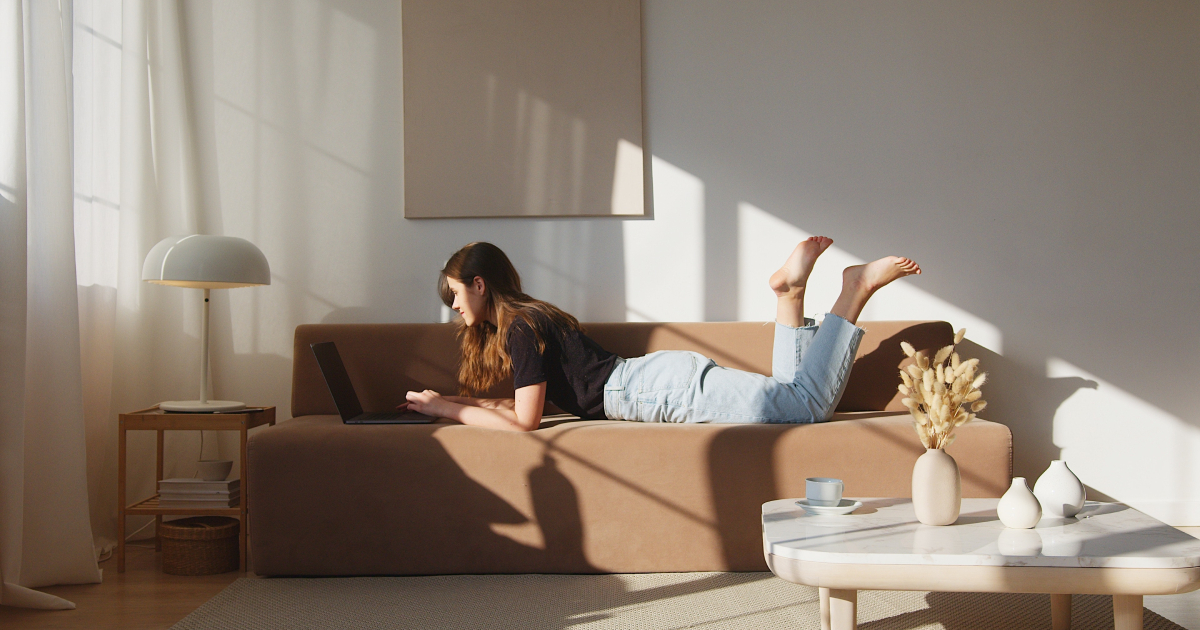A relaxing bedroom environment is essential for promoting restful sleep, reducing stress, and fostering a sense of calm and tranquility. Your bedroom should be a sanctuary where you can unwind, recharge, and escape from the hustle and bustle of daily life. By incorporating colors, cozy textures, and clutter-free spaces, you can transform your bedroom into a peaceful retreat that promotes relaxation and rejuvenation. Let’s explore practical tips and ideas on how to create a relaxing environment that enhances your well-being and quality of sleep.
1. Create a Cozy Bedding Oasis:
The focal point of a relaxing bedroom environment is the bed, where you spend a significant amount of time resting and recharging. Invest in high-quality bedding, including soft sheets, plush pillows, and a comfortable mattress, to create a cozy oasis that invites a restful night’s sleep. Opt for natural fabrics like cotton or linen for breathability and comfort, and layer your bed with blankets and throws for added warmth and texture. A well-made bed sets the tone for relaxation and ensures a peaceful night’s rest in your bedroom sanctuary.
2. Soft Lighting and Natural Elements:
Soft lighting and natural elements play a crucial role in creating a serene and calming bedroom environment. Incorporate adjustable lighting options, such as dimmable lamps, candles, or string lights, to create a cozy ambiance and promote relaxation. Bring nature indoors by adding houseplants, fresh flowers, or natural materials like wood or stone to introduce elements of tranquility and connection to the outdoors. Soft, warm lighting and natural elements contribute to a soothing atmosphere that encourages relaxation and restfulness in your bedroom.
3. Declutter and Simplify the Space:
Clutter and disorganization can hinder relaxation and contribute to a sense of chaos in the bedroom. Declutter and simplify your bedroom space by removing unnecessary items, organizing belongings, and creating a clutter-free environment. Invest in storage solutions like baskets, bins, and underbed storage to keep surfaces clear and maintain a sense of order in your bedroom. By decluttering and simplifying the space, you create a serene and tranquil environment that promotes relaxation and a restful night’s sleep.
4. Calming Color Palette:
The color scheme of your bedroom can significantly impact the atmosphere and mood of the space. Choose calming colors like soft blues, gentle greens, soothing grays, or warm neutrals to create a sense of serenity and relaxation. Lighter hues can make a room feel more spacious and airy, while darker tones can add coziness and intimacy to the space. Consider painting an accent wall or incorporating textiles in calming colors to infuse your bedroom with a sense of peace and tranquility that promotes relaxation.

5. Personalize with Relaxing Elements:
Personalizing your bedroom with relaxing elements that resonate with you can enhance the tranquil atmosphere of the space. Incorporate items that bring you joy and comfort, such as favorite artwork, scented candles, soothing music, or meaningful decor pieces. Consider adding a cozy reading nook, meditation corner, or relaxation station with comfortable seating and calming essentials to create a personalized retreat within your bedroom. By infusing your space with elements that promote relaxation and well-being, you create a sanctuary that nurtures your mind, body, and soul.
6. Mindful Technology Use:
In a world where technology is prevalent, it’s essential to practice mindful technology use in the bedroom to promote relaxation and quality sleep. Limit the use of screens, electronic devices, and blue light exposure before bedtime to prevent disruptions to your circadian rhythm and promote restful sleep. Create a technology-free zone in your bedroom, establish a relaxing bedtime routine, and incorporate calming activities like reading, journaling, or meditation to unwind and prepare your mind and body for restorative sleep.
7. Aromatherapy and Scented Candles:
Aromatherapy and scented candles are powerful tools for creating a relaxing bedroom environment through the use of calming scents and essential oils. Incorporate a diffuser with soothing essential oils like lavender, chamomile, or eucalyptus to promote relaxation, reduce stress, and improve sleep quality. Scented candles with natural fragrances can create a cozy atmosphere and enhance the ambiance of your bedroom sanctuary. By harnessing the power of aromatherapy, you can create a sensory experience that calms the mind, uplifts the spirit, and fosters relaxation in your bedroom.
8. Soundscapes and White Noise:
Soundscapes and white noise can mask disruptive sounds and create a peaceful auditory environment that promotes relaxation and better sleep. Consider incorporating soothing nature sounds, ambient music, or white noise machines to drown out external noise and create a tranquil atmosphere in your bedroom. Soundscapes can help relax the mind, induce a sense of calm, and lull you into a deeper and more restful sleep, enhancing the overall relaxation experience in your bedroom environment.

9. Comfortable Seating Area:
A comfortable seating area in your bedroom can provide a cozy retreat for relaxation, reading, or unwinding at the end of the day. Incorporate a plush armchair, chaise lounge, or bench with soft cushions and throws to create a cozy nook where you can relax and decompress. Add a side table with books, a reading lamp, or a journal to encourage quiet moments of reflection and relaxation in your bedroom sanctuary. A comfortable seating area enhances the functionality and comfort of your bedroom space, creating a multifunctional environment for unwinding and rejuvenation.
10. Mindful Practices and Relaxation Rituals:
Incorporating mindful practices and relaxation rituals into your daily routine can help promote a sense of calm and balance in your bedroom environment. Practice gentle yoga, meditation, deep breathing exercises, or mindfulness techniques to center yourself, reduce stress, and cultivate a tranquil mindset before bedtime. Create a bedtime routine that includes calming activities, such as a warm bath, a cup of herbal tea, or light reading, to signal to your body that it’s time to unwind and prepare for restorative sleep. By adopting mindful practices and relaxation rituals, you can create a peaceful and restful bedroom environment that supports your overall well-being and quality of sleep.
Conclusion:
Creating a relaxing bedroom environment is a transformative way to enhance your well-being, promote relaxation, and improve the quality of your sleep. By incorporating cozy bedding, soft lighting, decluttered spaces, calming colors, and personalized elements, you can cultivate a serene sanctuary that nourishes your mind, body, and soul. From practicing mindful technology use to incorporating aromatherapy, soundscapes, and relaxation rituals, there are numerous ways to create a tranquil bedroom environment that promotes restful sleep and rejuvenation. Embrace these tips and ideas to transform your bedroom into a peaceful retreat where you can unwind, recharge, and escape the stresses of the day.




